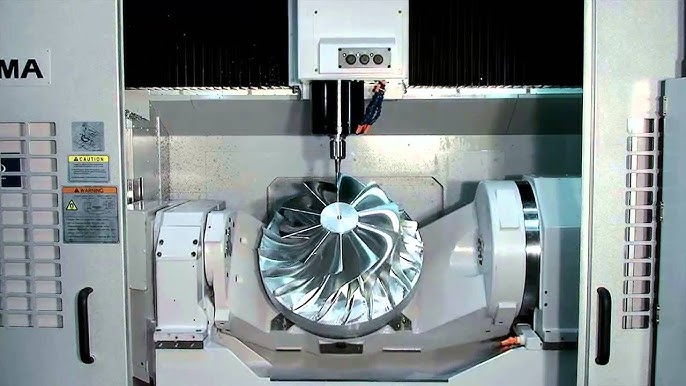CNC Machine
CNC machines—or Computer Numerical Control machines—are advanced tools that have revolutionized manufacturing across various industries. These machines are controlled by computers to perform precise, repetitive tasks, making production faster, more accurate, and less reliant on manual intervention. This blog will introduce you to CNC machining, its purpose, core components, and its widespread applications.
Understanding the Purpose of CNC Machines
At their core, CNC machines are designed to automate and streamline the production of complex parts. By using coded instructions, CNC machines can produce identical parts with high accuracy. This technology has become a crucial part of industries that demand precision, such as aerospace, automotive, mining, energy and electronics manufacturing. Whether creating a single prototype or mass-producing components, CNC machines offer speed, repeatability, and efficiency.
How Does CNC Machining Work?
In CNC machining, a pre-designed CAD (Computer-Aided Design) file is translated into machine code through CAM (Computer-Aided Manufacturing) software. The CNC machine then interprets this code, guiding tools to cut, drill, or shape materials according to the precise dimensions outlined in the CAD design. This process ensures that parts are consistently accurate down to fractions of a millimeter, far surpassing what is achievable through manual methods.
Key steps involved in CNC machining:
- Design Phase: The part or component is designed using CAD software, defining its shape, dimensions, and features.
- Programming Phase: CAM software converts the design into G-code or M-code, the programming languages used by CNC machines.
- Machine Setup: The CNC machine is set up, and tools are chosen according to the material and the required specifications.
- Machining Process: The machine follows the coded instructions to cut, drill, or mill the material into the final product.
- Finishing and Quality Check: After machining, parts undergo finishing and inspection to ensure they meet quality standards.
Key Components of CNC Machines
CNC machines have several essential components that enable them to perform precise machining tasks:
- Control Panel: The main interface for the operator, containing all necessary controls and information displays.
- Spindle: This part holds the cutting tool and rotates at high speeds, cutting through the material based on programmed instructions.
- Axis Motors: CNC machines typically operate along multiple axes (X, Y, Z), which the motors control to guide the tool with extreme precision.
- Tool Changer: Some CNC machines come with automatic tool changers that allow them to switch tools as needed without manual input.
- Bed or Table: The material is placed on a stable table or bed that supports it throughout the machining process.
Applications of CNC Machines
Applications of CNC machines are vast, making them indispensable across multiple fields that demand precision, efficiency, and reliability. Here are some of the top industries that benefit from CNC machining:
- Aerospace: CNC machines are critical in producing parts for aircraft, including engine components, landing gear, and structural elements. These parts require high accuracy and quality standards due to their role in safety and performance.
- Automotive: From engine blocks and transmission parts to custom vehicle components, CNC machining plays a significant role in the automotive industry by enabling high-volume production and customization.
- Mining: The mining industry relies on CNC machining to manufacture durable and wear-resistant parts for heavy machinery and equipment. CNC machines help create components like gears, drilling heads, and supports that can withstand extreme environments.
-
- Fuel Cell Technology: CNC machining is essential in the production of fuel cell components, including plates, enclosures, and connectors that require precision to ensure optimal performance and longevity.
- Electrolyser Production: Electrolysers, used for hydrogen production, require highly precise parts to function effectively. CNC machines are used to create components like electrodes, separators, and frames to ensure proper assembly and efficiency.
- Electronics: In electronics manufacturing, CNC machining is used to create parts for PCB boards, casings, and various connectors, supporting the precise fabrication of smartphone parts, computers, and other digital devices.
Why Are CNC Machines So Important?
The automation and precision that CNC machining brings to manufacturing processes are invaluable, reducing both production time and waste. As industries move towards smart manufacturing and digital transformation, CNC machines are increasingly integrated with other technologies to create a streamlined production line.
With continuous advancements in multi-axis machining and CNC software, CNC machines have become more versatile and capable of handling complex geometries and materials. The future of CNC machining is promising, as it will continue to support more sustainable and cost-efficient production across various sectors.
Conclusion
Understanding what a CNC machine is and how it works is essential for anyone interested in modern manufacturing. From creating one-off prototypes to mass production, CNC machining is integral to producing high-quality, precise parts efficiently. At CIMtech Green Energy, we specialize in advanced CNC machining solutions designed to meet the unique needs of various industries. Explore our services to see how our cutting-edge CNC technology can support your next project.

